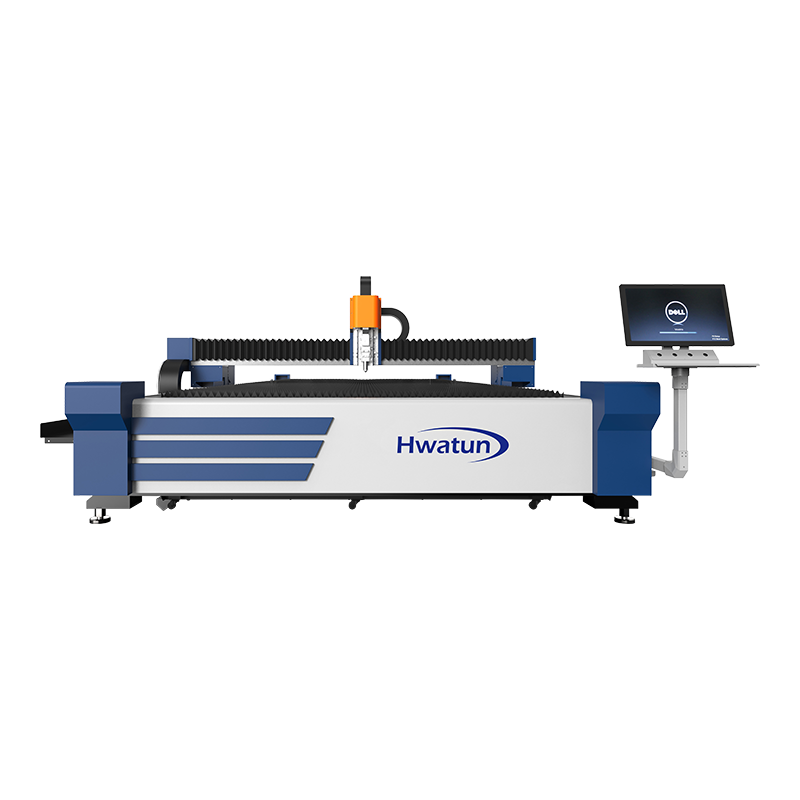What are the requirements for high efficiency, low energy consumption and automation of Single-table Fiber Optic Laser Cutting Machine?
The requirements for single-table fiber laser cutting machines in terms of high efficiency, low energy consumption and automation are very important, especially in modern manufacturing. These requirements directly affect production costs, environmental impact and market competitiveness.
In order to achieve efficient cutting, single-table fiber laser cutting machines usually require higher laser power. Higher power increases cutting speed, especially in thicker metal materials. When cutting conventional materials (such as carbon steel and stainless steel), the use of high-power lasers (such as 6kW and above) can significantly improve production efficiency.
Through advanced control algorithms (such as CAD/CAM integration), the cutting path can be optimized to reduce unnecessary pauses or repeated cuts, thus improving overall efficiency.
The use of a high-speed dynamic focusing system and a more efficient laser beam transmission system ensures that the laser beam can track the material surface accurately and at high speed during the cutting process to increase the cutting speed.
Combined with the automated loading and unloading system, the idle time is reduced and the cutting utilization rate of the equipment is improved. For example, by optimizing the operation of the automatic loading and unloading system, the machine can quickly switch to the next task after completing one cutting task, thereby avoiding the machine from idling for a long time.
Improve the response speed and acceleration of the motion platform (such as X, Y axis drive) to reduce time loss in the non-cutting stage.
Intelligent software automatically adjusts cutting parameters (such as power, speed, gas pressure), allowing the fiber laser cutting machine to quickly switch and adapt to the cutting needs of different materials and thicknesses, thus improving overall production efficiency.
The laser source of fiber laser cutting machine has higher conversion efficiency than traditional CO₂ laser, and can usually reach an efficiency of more than 30%. Fiber lasers transmit laser light through optical fibers, reducing energy loss and ensuring higher energy efficiency of the laser beam.
Using advanced power adjustment technology, the laser power can be accurately controlled according to different cutting needs to avoid unnecessary waste of energy. For example, when cutting thin plates, the laser power can be appropriately reduced to save energy.
The single-table fiber laser cutting machine can enter standby mode without cutting, reducing energy consumption when the equipment is in standby.
Use an efficient cooling system (such as air cooling or water cooling technology) to reduce the energy consumption of the cooling system by accurately controlling the cooling water temperature.
Optimize cutting gas usage, such as adjusting gas flow according to cutting material and thickness, to avoid overuse of gas and reduce consumption.
Waste gases (such as oxides and cutting gases) generated during the laser cutting process can be processed or reused through the recovery system, reducing energy waste and environmental pollution.

In order to improve production efficiency, fiber laser cutting machines are usually equipped with automatic loading and unloading systems, so that raw materials can be automatically fed into the machine and automatically unloaded after cutting is completed. This system can greatly reduce manual intervention, saving time and labor costs.
In some high-end applications, laser cutting machines can be integrated with robot systems to achieve fully automated production processes, from raw material feeding and cutting to finished product transportation.
Modern fiber laser cutting machines are equipped with high-performance numerical control systems (such as CNC control systems), which can automatically adjust according to preset parameters and accurately control cutting speed, power, focal length, etc., ensuring cutting accuracy while reducing manual intervention.
Through Internet connection, manufacturers and operators can monitor equipment operating status and operating data in real time, and even perform remote diagnosis and adjustment, reducing equipment downtime and maintenance costs.
Through advanced sensors and control systems, fiber laser cutting machines can monitor material changes (such as thickness, temperature, surface conditions, etc.) during the cutting process in real time, and automatically adjust cutting parameters to adapt to the changes, thereby improving cutting quality and efficiency.
Use CAD/CAM software for path planning and optimization to automatically generate optimal cutting paths, reduce ineffective movements and pauses, and improve overall cutting efficiency.
Modern laser cutting machines can handle workpieces of different sizes and materials at the same time. Through intelligent scheduling and workpiece identification, they support flexible manufacturing and meet diverse production needs.
Through the intelligent production scheduling system, production tasks are automatically arranged according to the needs and priorities of orders, improving the overall operating efficiency of the production line.
In the design and application of modern single-table fiber laser cutting machines, high efficiency, low energy consumption and automation are its three core requirements. By optimizing laser power, cutting path, gas utilization, cooling system, automated loading and unloading, and intelligent control technologies, the performance and production efficiency of the equipment can be significantly improved, while energy consumption and operating costs can be reduced. These requirements can not only help enterprises improve productivity, but also enhance their competitiveness in the global market and promote the realization of green manufacturing and intelligent production.
Категории новостей
Категории продукта
сопутствующие товары
 +86-159 5138 1316
+86-159 5138 1316 +86 180 6819 3096
+86 180 6819 3096 [email protected]
[email protected] Group 4, Xinba Village, Binhai New Area (jiaoxie Town), Laoba Port, Nantong City, Jiangsu, China.
Group 4, Xinba Village, Binhai New Area (jiaoxie Town), Laoba Port, Nantong City, Jiangsu, China.
Copyright © 2024 Nantong Hwatun Heavy Machine Tool Co., Ltd. All Rights Reserved.

 Русский
Русский 简体中文
简体中文 English
English Español
Español
